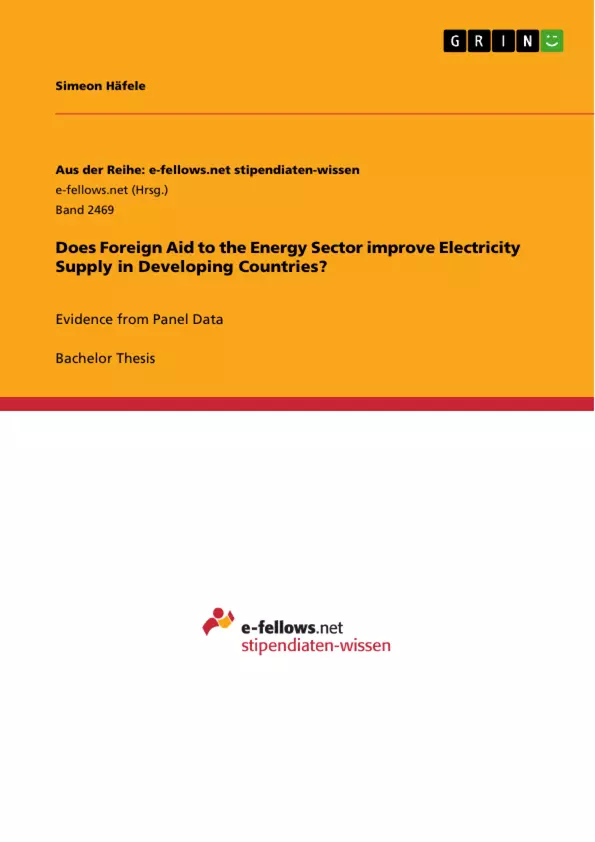This bachelor thesis examines whether foreign aid to the energy sector has a significant impact on the development of a country’s electricity sector by analysing the impact of aid disbursements to the energy sector on three different sector-specific outcome indicators in a fixed effects model. Besides, as heterogeneity of aid recipients might influence the effect, different regressions are run for low income, lower middle income and upper middle income countries.
Results indicate that foreign aid to the energy sector affects electricity output positively and significantly, while not having an impact on generation capacity. The impact on electricity consumption per capita remains unclear. Furthermore, it seems to work more effectively in richer countries. This is robust to a set of sensitivity tests. Thus, the results emphasize the importance of disaggregating aid flows and the use of sector specific outcome variables in order to measure the impact of foreign aid.
Inhaltsverzeichnis (Table of Contents)
- I. INTRODUCTION
- II. LITERATURE OVERVIEW
- A. THE AID-GROWTH RELATIONSHIP
- B. THE DISAGGREGATION OF AID FLOWS
- C. THE ELECTRICITY SECTOR WORLDWIDE: AN OVERVIEW
- D. THE NEXUSES OF ELECTRICITY SUPPLY
- III. EMPIRICAL ANALYSIS
- A. DATA SOURCES AND UNITS
- B. DESCRIPTIVE STATISTICS
- C. ESTIMATION STRATEGY
- D. RESULTS
- E. ROBUSTNESS TESTS
- IV. CONCLUSION
Zielsetzung und Themenschwerpunkte (Objectives and Key Themes)
This bachelor thesis examines the impact of foreign aid allocated to the energy sector on electricity supply in developing countries. The research utilizes a fixed effects model to analyze the relationship between aid disbursements and specific indicators of electricity sector development.
- The influence of foreign aid on electricity output, generation capacity, and per capita electricity consumption in developing countries.
- The heterogeneous effects of aid across income groups, focusing on low, lower middle, and upper middle income countries.
- The importance of disaggregating aid flows and using sector-specific outcome variables for accurate measurement of aid effectiveness.
- The effectiveness of aid interventions across various income levels and the potential for varying impacts in different economic contexts.
- The significance of foreign aid in contributing to the development of the electricity sector in developing countries.
Zusammenfassung der Kapitel (Chapter Summaries)
The first chapter introduces the research topic and outlines the objectives of the study. Chapter two reviews existing literature on the relationship between aid and economic growth, the disaggregation of aid flows, the global electricity sector, and the interconnections between electricity supply and development. Chapter three delves into the empirical analysis, covering data sources, descriptive statistics, estimation strategy, results, and robustness tests.
Schlüsselwörter (Keywords)
Foreign aid, energy sector, electricity supply, developing countries, panel data, fixed effects model, impact evaluation, income groups, heterogeneity, disaggregation, outcome variables.
- Quote paper
- Simeon Häfele (Author), 2016, Does Foreign Aid to the Energy Sector improve Electricity Supply in Developing Countries?, Munich, GRIN Verlag, https://www.grin.com/document/356775



